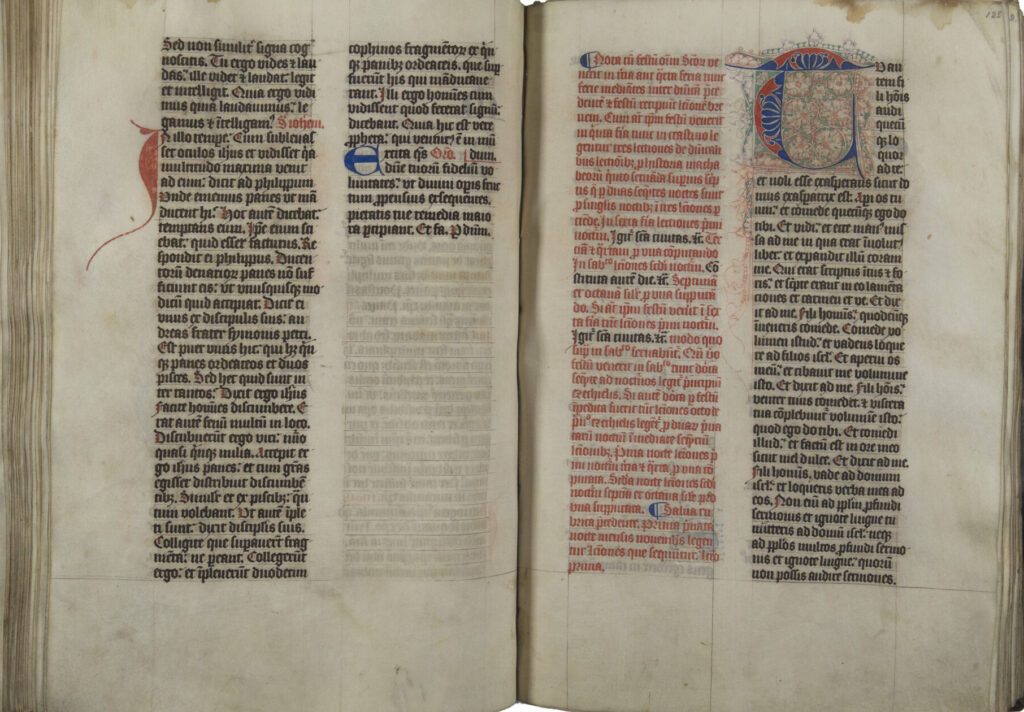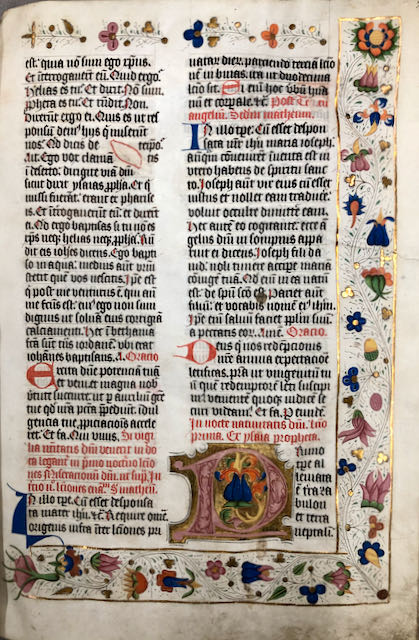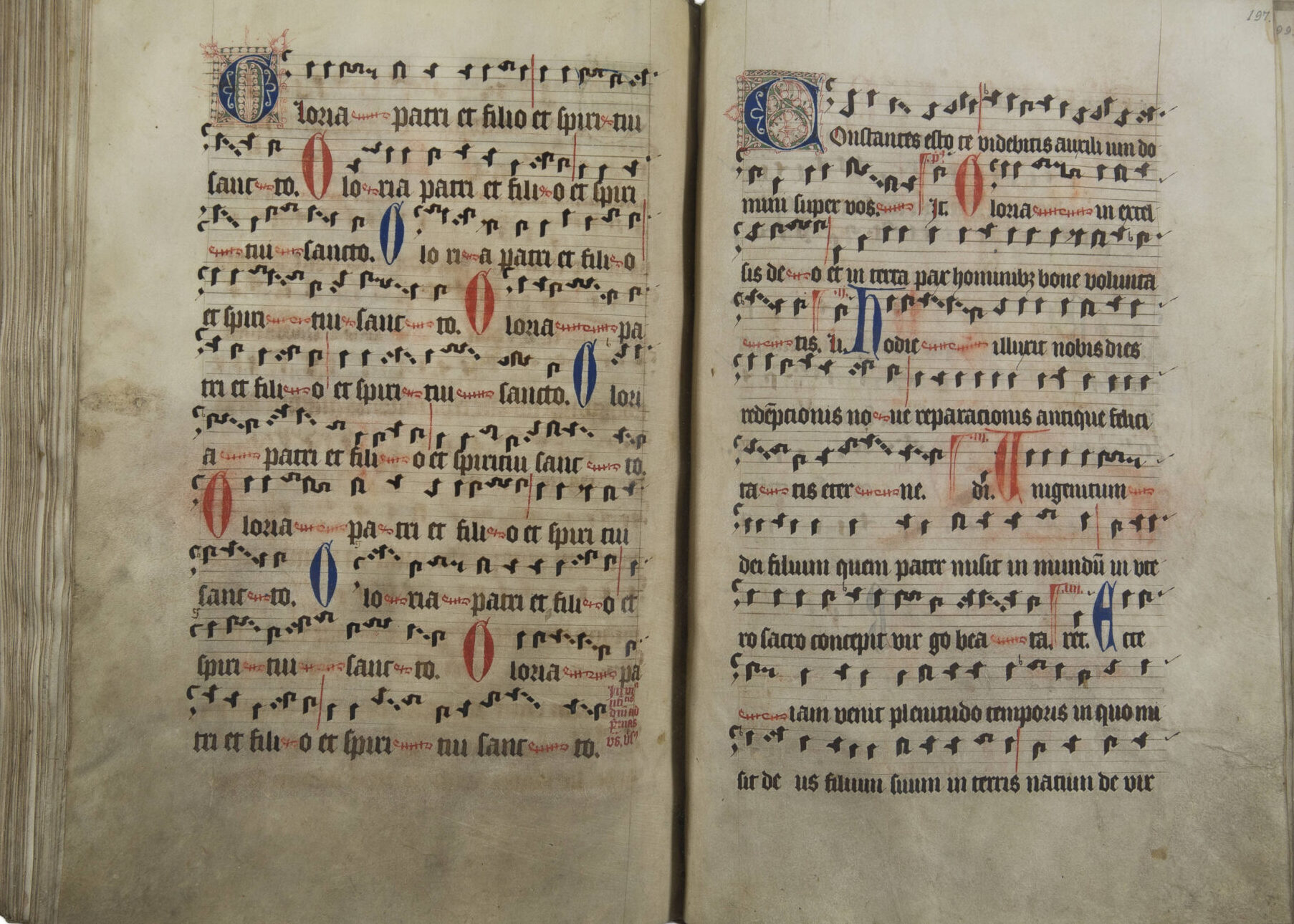Nowadays, there is a watchtower on this spot near the Selwerderhof cemetery, but this used to be the location of the Benedictine monastery of Selwerd. The monastery was established between 1150 and 1200, and remained in use until 1595. This hefty manuscript, consisting of 206 parchment leaves, was written here between 1469 and 1488. It is a so-called lectionarium, which literally means a book of readings. It contains readings for the matins, the first prayers of the day that were read out loud just before sunrise. The pastedown at the front of the book contains the following text in elegant handwriting, indicating the owner of the manuscript: In zyloe, ad sanctam catherinam prope groeningen. Toe zelwert. (In Selwerd, at Saint Catherine’s near Groningen. At Selwerd.) These words establish the provenance of the book and the patron saint of the monastery: Saint Catherine of Alexandria. Officially, Selwerd was a double monastery, for both nuns and monks. In this region, however, many of these double monasteries were mainly inhabited by nuns. This was also the case in Selwerd.

At the time when this book was written, Hendrik Vries (1444-1480), father of the well-known humanist Rudolph Agricola, was the abbot of Selwerd. Vries is known for the huge changes he initiated. Under his guidance, the monastery flourished. Its possessions were expanded and discipline was reinstated. Abbot Vries also set up a scriptorium, where nuns wrote and copied manuscripts for their own use and for the well-to-do. This was an excellent source of income for the monastery. This lectionarium was written for the monastery’s own use.

We know the names of several nuns from Selwerd: Hildegard Sigers, Wendelmodis Roltemans, Renseken Syghers, Ghese ten Broeke, and Agnes Martini. Between 1468 and 1500 they participated in transcribing or decorating books in the scriptorium at Selwerd. In those days, scribes usually did not sign the texts they copied, but in some of the manuscripts from Selwerd the names of these nuns are found. Unfortunately, there are no names in this particular lectionarium, so it is impossible to determine who copied it.
In 1469, the Selwerd monastery joined the Congregation of Bursfeld. This was a new and very religious union of reformed monasteries within the Benedictine Order. Liturgy (mass) and the content of the books were deemed very important by the order, which led to more writing in the order’s monasteries. During the general chapters (when all the monasteries within the order met), the creation of a lectionarium was discussed that would be based on the ideas of the congregation. Four of these lectionaria were created and taken to monasteries of the order to be copied. The Selwerd lectionarium was based on this Bursfeld lectionarium.


More than a century later, in 1595, the Selwerd monastery was closed. It is unclear what happened to this lectionarium at that time. Maybe it was still used in one of the two refugia (houses of refuge) owned by the monastery in the city of Groningen, where the nuns and monks could seek shelter during times of war. All we know is that it ended up in the collection of the University of Groningen Library at some point between 1615 and 1870.
Author: Nouschka van der Meij







